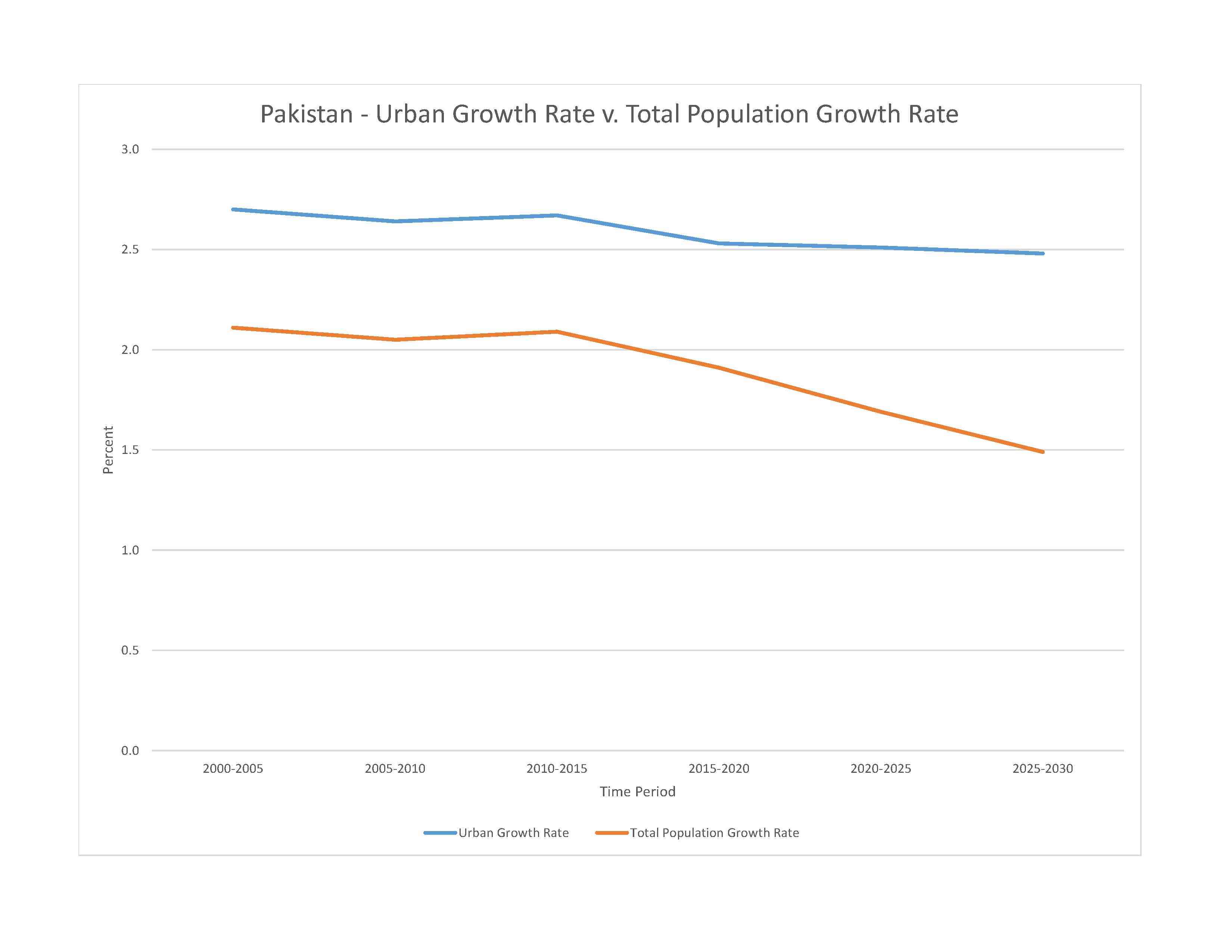
247,653,551 (2023 est.)
note: results of Pakistan's 2017 national census estimate the country's total population to be 207,684,626
noun: Pakistani(s)
adjective: Pakistani
Punjabi 44.7%, Pashtun (Pathan) 15.4%, Sindhi 14.1%, Saraiki 8.4%, Muhajirs 7.6%, Baloch 3.6%, other 6.3%
Punjabi 38.8%, Pashto (alternate name, Pashtu) 18.2%, Sindhi 14.6%, Saraiki (a Punjabi variant) 12.2%, Urdu 7.1%, Balochi 3%, Hindko 2.4%, Brahui 1.2%, other 2.4%
major-language sample(s):
دنیا کا قاموس، ایک لازمی زریہ بنیادی معلومات کا (Urdu)
The World Factbook, the indispensable source for basic information.
note: data represent population by mother tongue; English (official; lingua franca of Pakistani elite and most government ministries)
Muslim (official) 96.5% (Sunni 85-90%, Shia 10-15%), other (includes Christian and Hindu) 3.5% (2020 est.)
0-14 years: 34.81% (male 44,002,871/female 42,216,200)
15-64 years: 60.41% (male 76,548,821/female 73,065,518)
65 years and over: 4.77% (2023 est.) (male 5,482,633/female 6,337,508)
total dependency ratio: 70
youth dependency ratio: 62.8
elderly dependency ratio: 7.2
potential support ratio: 13.9 (2021 est.)
total: 22.7 years (2023 est.)
male: 22.6 years
female: 22.8 years
1.91% (2023 est.)
26 births/1,000 population (2023 est.)
5.9 deaths/1,000 population (2023 est.)
-1 migrant(s)/1,000 population (2023 est.)
the Indus River and its tributaries attract most of the settlement, with Punjab province the most densely populated
urban population: 38% of total population (2023)
rate of urbanization: 2.1% annual rate of change (2020-25 est.)

17.236 million Karachi, 13.979 million Lahore, 3.711 million Faisalabad, 2.415 million Gujranwala, 2.412 million Peshawar, 1.232 million ISLAMABAD (capital) (2023)
at birth: 1.05 male(s)/female
0-14 years: 1.04 male(s)/female
15-64 years: 1.05 male(s)/female
65 years and over: 0.87 male(s)/female
total population: 1.04 male(s)/female (2023 est.)
22.8 years (2017/18 est.)
note: data represents median age at first birth among women 25-49
154 deaths/100,000 live births (2020 est.)
total: 52.7 deaths/1,000 live births (2023 est.)
male: 57.1 deaths/1,000 live births
female: 48.1 deaths/1,000 live births
total population: 70 years (2023 est.)
male: 67.9 years
female: 72.1 years
3.39 children born/woman (2023 est.)
1.66 (2023 est.)
34% (2018/19)
improved: urban: 96.5% of population
rural: 92.5% of population
total: 94% of population
unimproved: urban: 3.5% of population
rural: 7.5% of population
total: 6% of population (2020 est.)
2.8% of GDP (2020)
1.12 physicians/1,000 population (2019)
0.6 beds/1,000 population (2017)
improved: urban: 88.6% of population
rural: 73.2% of population
total: 78.9% of population
unimproved: urban: 11.4% of population
rural: 26.8% of population
total: 21.1% of population (2020 est.)
degree of risk: high (2023)
food or waterborne diseases: bacterial diarrhea, hepatitis A and E, and typhoid fever
vectorborne diseases: dengue fever, malaria, and Crimean-Congo hemorrhagic fever
animal contact diseases: rabies
note: Pakistan is one of two countries with endemic wild polio virus (the other is Afghanistan) and considered high risk for international spread of the disease; before any international travel, anyone unvaccinated, incompletely vaccinated, or with an unknown polio vaccination status should complete the routine polio vaccine series; before travel to any high-risk destination, the US Centers for Disease Control and Prevention (CDC) recommends that adults who previously completed the full, routine polio vaccine series receive a single, lifetime booster dose of polio vaccine
8.6% (2016)
total: 0.04 liters of pure alcohol (2019 est.)
beer: 0 liters of pure alcohol (2019 est.)
wine: 0 liters of pure alcohol (2019 est.)
spirits: 0.04 liters of pure alcohol (2019 est.)
other alcohols: 0 liters of pure alcohol (2019 est.)
total: 20.2% (2020 est.)
male: 33% (2020 est.)
female: 7.3% (2020 est.)
23.1% (2017/18)
63.5% (2023 est.)
women married by age 15: 3.6%
women married by age 18: 18.3%
men married by age 18: 4.7% (2018 est.)
2.4% of GDP (2021 est.)
definition: age 15 and over can read and write
total population: 58%
male: 69.3%
female: 46.5% (2019)
total: 9 years
male: 9 years
female: 8 years (2019)
NOTE: The information regarding Pakistan on this page is re-published from the 2024 World Fact Book of the United States Central Intelligence Agency and other sources. No claims are made regarding the accuracy of Pakistan 2024 information contained here. All suggestions for corrections of any errors about Pakistan 2024 should be addressed to the CIA or the source cited on each page.
This page was last modified 04 May 24, Copyright © 2024 ITA all rights reserved.